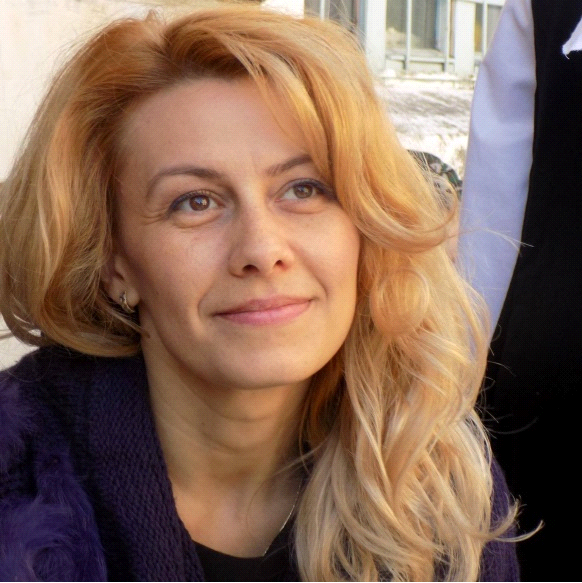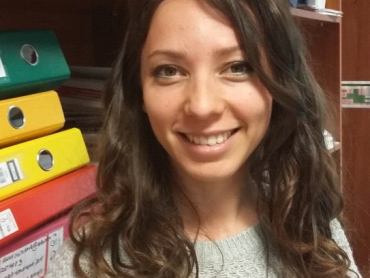
Maria Valentina Sava, “Panait Istrati”County Library Braila
Trainer within the “Cultural Agora @ Your Library” project
Digital Storytelling – Cultural diversity through the digital stories technique
Motto: At any age, man is a creature that feeds on stories. Therefore, the wealth measured in stories, gathered by the people across the globe, from house to house, from century to century, either spoken or in writing, exceeded any other human wealth. Rabindranath Tagore
The Digital Storytelling Course takes place within the “Cultural Agora @ Your Library” project, implemented by ANBPR – National Association of Libraries and Librarians in Romania, in partnership with Jazzmontor AS Norway, the REPLIKA Cultural Association, “Panait Istrati” County Library Braila, “Octavian Goga” County Library Cluj, “ASTRA” County Library Sibiu and Bucharest Metropolitan Library.
Publicly launched at the National Library of Romania, the project takes place in Bucharest and in the counties of Braila, Cluj and Sibiu. Both the public librarians and the community members attended the regional sessions of Digital Storytelling and the theater show “In your words,” held in Lyra Hall from Braila on February 25th, 2016.
The play, inspired by the hundreds of digital stories created under the project Cultural Agora @ Your Library, promoted the cultural diversity of ethnic minorities in Romania. The theater show directed by Radu Apostol was presented in the cities of Braila, Sibiu, Cluj and Bucharest between February 22 to March 24, being received with excitement and very appreciated by the public, as it captured the most relevant aspects of the Romanian cultural landscape from a multiethnic point of view.
The finality of the Cultural Agora @ Your Library will be the permanent feature offered by the public libraries, of creating digital stories, inspired by the life of the community, particularly of the minorities.
These activities are organized in order to identify and highlight the cultural specificity of ethnic minorities in Romania and are also an innovative way to raise the public awareness on the value of collective memory and to encourage the participation of ethnic minorities to the cultural life, in a creative way.
The project is also a modern way to bring the heritage value of the collective memory to the public attention, but also to encourage the community to be open and aware of the cultural and historical value that they hold. One of the major benefits to the community is the fact that through the stories created they are throwing a bridge between minorities and the rest of the community. The same connection it is welded between the people who use the library services and the county library, the latter being a facilitator in the exchange of knowledge and ideas between the community and ethnic minorities.
The project has been running between April 2015 – June 2016 and during this time are to be carried out over 800 digital stories in the four regional centers, involving at least 1,000 people nationwide.
Attendance in the training sessions is free upon registration, involving people with different ethnic backgrounds, religious beliefs and, especially, different ages and professions. The project is actually a comprehensive research on the city’s cultural diversity, and also a valorization of the community and its image interpretation. Thus, the library institution becomes a competent facilitator in creating materials coming from users who choose to participate for their personal and cultural development.
The benefits of this course for the participants are: International expertise; Quality networking; Access to technology; Innovation and creativity; Own digital story; Exposure and visibility through the project.
Through the digital story technique, used as a way of working in the training sessions organized within the County Library “Panait Istrati” Braila, each participant – as a member of the community – creates his or her own story based on testimonials, videos or photos about cultural values, life, profession, hobby or other relevant experiences and is able to share it with the world through online communication.
The project involves the implementation for 12 months and developing a permanent DST feature (Digital Storytelling – Digital Stories) in the County Library “Panait Istrati” Braila, with the community participation, including the ethnic minorities. The library initially recruited 15 librarians. They attended the training courses being taught by two trainers: Laura Caplea and Maria Valentina Sava. The activity consists in carrying out four courses of two days each, and consequently, through this service are to be trained about 25 participants on monthly basis.
Through the Digital Storytelling sessions, the participants – library users and community members – are encouraged to express and to value themselves through the digital story technique, to develop ideas for the story, to write a script, edit photos, record and mix sounds using the logistics of the project. By this program, the county library has received the necessary equipment for the implementation of the permanent service of creating digital stories – five sets including: laptop, scanner, voice recorder, camera, and a plasma TV used to disseminate the digital creations in the guise of a permanent exhibition.
Through the Digital Storytelling sessions, the participants – library users and community members – are encouraged to express and to value themselves through the digital story technique, to develop ideas for the story, to write a script, edit photos, record and mix sounds using the logistics of the project. By this program, the county library has received the necessary equipment for the implementation of the permanent service of creating digital stories – five sets including: laptop, scanner, voice recorder, camera, and a plasma TV used to disseminate the digital creations in the guise of a permanent exhibition.
Given the fact that Braila benefits from a cultural and ethnic diversity (Greeks, Armenians, Hebrews, Lipovan – Russians, Turks, Bulgarians, Roma etc.) the general objective of the project, namely the reactivation of the memory and the cultural and historical significance of this city, brings to light personal stories, life stories, data and facts that are revealed to the public through a virtual exhibition at international level.
The challenges of the project are to learn, to discover, to have access to the stories told by Greeks, Jews, Lipovans- Russians, Turks, Italians, Armenians, Bulgarians, Roma who were born, lived for a while in Braila, or still live here or have family members willing to narrate “memories about olden cosmopolitan Braila, about buildings, business, trades or crafts forgotten, about the personalities of the city or family stories, information about the beliefs, customs, traditions, values, stereotypes, mentalities, superstitions, private life, gastronomy – things that have lost or are still preserved in these families” as trainer Laura Caplea was telling us .
An important source, in terms of the value of the information is brought by the images (scanned or photographed) of documents or of objects which have historical value for those families – vintage photos, pictures of olden Braila or places of worship, of institutions, old shops or the port of Braila, images of public events, cultural or family photos with icons, jewelry, furniture, musical items, clothing items or other personal items. Also an added value of the movies can be made with images of newspapers or other publications of ethnic minorities, old books or textbooks in the ethnical minorities languages and Braila postcards from the beginning of the century to date.
All these challenges, once cleared away, can help to upgrade the imaging and audio-visual repertoire owned by the county library, but, most of all, this repertoire, through the digital stories, has fulfilled a mission that goes beyond times, ages, or personal stories. It reveals in the eyes of generations to come with the humility and simplicity of the occasional narrator, without pretending to take part in the oral history of Braila: moments, places, facts, people. People who have contributed to the cultural diversity of Braila simply by being or by scholarly efforts, times and often world renowned: Hariclea Darclee, Panait Istrati, Ilarie Voronca or Mihail Sebastian.


